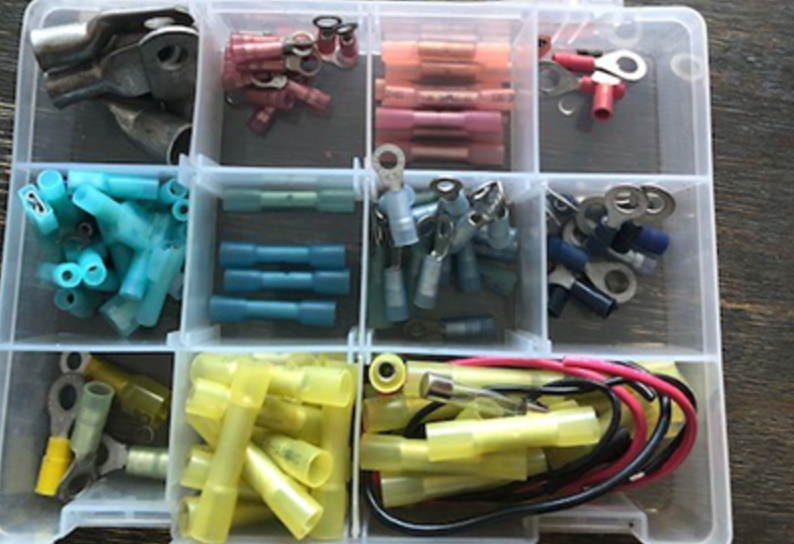Electrical Connections: Basics and How-Tos

Some of the most common jobs that I’m asked to look at are electrical installations and upgrades. Surprisingly, the majority of these types of jobs are to clean up the wiring of years past — when electrical standards were more fluid and jury-rigged upgrades have been added and adapted over multiple owners and contractors.
A danger zone that I often see is poor connections in electrical wiring. This could be wire-to-wire (a connection, splice or repair) or the end of wire to a terminal connection. Improper connections can break or vibrate loose, can cause electricity to arc causing melting or fires or can allow moisture, dirt and corrosion to enter and impede performance.

How to Make a Proper Connection
There are a few basics tools and supplies needed for a quality electrical connection:
- Appropriate wiring — tinned copper, multi-strand wire at the correct gauge thickness for the application
- Connectors and terminals — marine-rated butt connectors and ring terminals
- Stripping and crimping tools

Steps To Making an Electrical Connection
- Select appropriate gauge wiring for the application, based on the amperage that the appliance will draw and the distance between the power source and the appliance. Check wire-size and ampacity charts first.
- Select the appropriate connectors — to match the wire size and connection holes.
- Select the appropriate size shrink-tubing to cover the repair.
- Have appropriate wire stripper, crimping and heat tools at the ready.
- Strip the wire end to the appropriate length. Dry fit into the connection.
- Place the connection on the wire end and crimp in place. Pull-test the wire to confirm that it’s held in place.
- Slide shrink-tubing over the repair and heat in place (or use a connector with shrink-tubing ends).
- Done. Next connection.


Andrew McDonald is the owner of Lakeside Marine Services — a boat repair/maintenance firm based in Toronto. He has worked in the marine industry for 12 years and is a graduate of the Georgian College ‘Mechanical Techniques — Marine Engine Mechanic’ program.